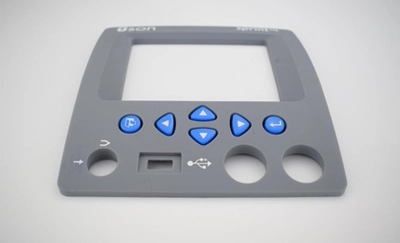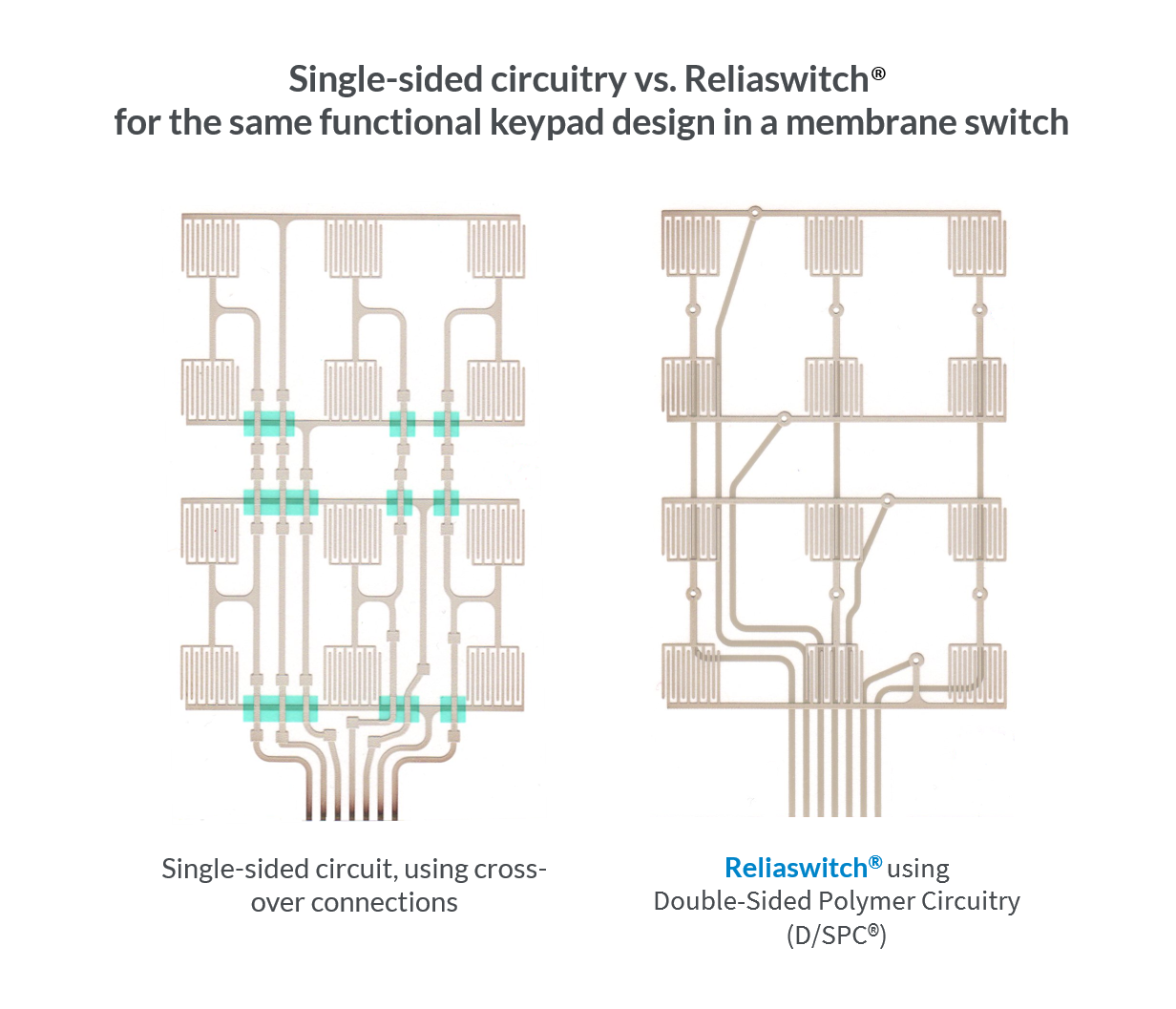The Production Refine Behind Membrane Switch Over: What You Need to Know
The production process behind membrane layer changes combines mindful style, material selection, and top quality control. It begins with recognizing the complexities of membrane layer switch style and progresses via different phases, including product choices and printing methods. Each stage plays a crucial function in ensuring performance and durability. Nonetheless, the complexities of layer building and the strenuous testing requirements might reveal insights that are not immediately noticeable. What exists past these foundational elements?
Recognizing Membrane Switch Design
Although membrane buttons might show up simple in the beginning look, their design includes complex factors to consider that assure functionality and sturdiness. The style procedure starts with a thorough understanding of user demands, consisting of the user interface's desired application and ecological factors. Ergonomics is a crucial element, as the format has to assist in simplicity of use while making certain that tactile comments meets individual expectations.Moreover, the layering of components, such as graphic overlays, sticky layers, and conductive traces, need to be exactly engineered. membrane switch. This layered configuration not just affects the switch's responsiveness but also influences its long life. Interest is offered to the sealing techniques employed to safeguard against dampness and dirt, which could compromise efficiency. Furthermore, design considerations include aesthetic appeals, where color schemes and aesthetic clearness enhance customer experience. Eventually, the layout of membrane switches over balances capability, individual experience, and sturdiness, guaranteeing that they meet the needs of various applications effectively
Materials Used in Membrane Change Manufacturing
When selecting products for membrane button manufacturing, it is necessary to contemplate both efficiency and resilience. The primary products include polyester and polycarbonate films, which supply flexibility and toughness. These films are usually covered with adhesive to ensure correct bonding to substrates. Conductive inks, commonly composed of silver or carbon, are essential for creating electrical links within the button, permitting reliable operation.Additionally, a protective layer, such as a tough coat, is often used to improve scrape resistance and longevity. The option of backing product, such as acrylic or foam, can significantly affect the button's tactile feel and overall individual experience. In addition, various environmental factors, including temperature level and humidity, need to direct product option to assure peak performance in particular applications. Eventually, the ideal mix of products adds to the membrane switch's functionality and lifespan, making notified options crucial for manufacturers.
The Printing Process: Creating Video and Text
The printing procedure in membrane layer button manufacturing plays a significant function in producing high-grade graphics and text. Numerous visuals design methods are utilized to assure aesthetic allure and capability, while mindful ink option techniques are crucial for durability and efficiency. Recognizing these components is basic for attaining ideal lead to membrane switch design.
Graphic Style Techniques
Graphic style techniques play an essential duty in the printing process of membrane buttons, as they define just how graphics and text will ultimately show up on the final item. Efficient graphic layout involves the critical usage of shades, designs, and fonts to enhance readability and aesthetic appeal. Developers commonly use vector graphics for scalability, making certain that images stay sharp at numerous sizes. Furthermore, focus to contrast and placement is essential, as it affects user communication and visual quality. The incorporation of branding elements, such as logo designs, must be managed with like maintain brand name honesty. In general, thoughtful visuals design methods add substantially to the functionality and appearance of membrane layer switches, affecting customer experience and product performance.
Ink Selection Techniques
Picking the suitable ink is necessary for achieving the preferred visual quality and durability in membrane switch manufacturing. Numerous ink kinds are utilized, including solvent-based, water-based, and UV-curable inks. Each type uses unique features, such as adhesion, flexibility, and resistance to ecological factors. Solvent-based inks are typically favored for their sturdiness and lively shades, while water-based inks are a lot more eco-friendly however may have restrictions in bond. UV-curable inks offer rapid curing and robust efficiency. In addition, shade matching methods guarantee that the selected inks align with design requirements. Inevitably, the option of ink should consider factors such as application method, substratum compatibility, and end-use demands to accomplish exceptional results in membrane layer button graphics and text.
Layer Construction and Assembly

Material Selection Process
A cautious option of materials is important in the manufacturing process of membrane switches, as it directly influences performance and toughness. The key materials used consist of polyester, polycarbonate, and numerous conductive inks. Polyester is often favored for its look at this site excellent resistance to chemicals and abrasion, making it suitable for harsh environments. Polycarbonate, on the various other hand, provides premium quality and effect resistance, which is beneficial for applications calling for exposure and effectiveness. Conductive inks, commonly made up of silver or carbon, are essential for developing trusted electric pathways. In addition, the option of sticky materials impacts the general stability of the switch - membrane switch. Evaluating variables such as ecological exposure, tactile responses, and aesthetic requirements overviews suppliers in picking the finest materials for their specific applications
Layer Attachment Methods
Adhering layers in membrane layer switch construction is a vital procedure that guarantees capability click for more info and durability. Numerous bond strategies are utilized to safeguard suitable bonding between layers, which normally include using adhesives, heat, and stress. Pressure-sensitive adhesives (PSAs) are commonly used for their ease of application and instant bonding capabilities. Furthermore, thermal bonding techniques can be used, where heat is made use of to activate glue buildings, protecting a solid bond. The choice of attachment method mainly depends on the materials entailed and the specific application demands of the membrane layer switch. Appropriate alignment and uniform application of adhesives are essential to avoid issues, protecting the switch runs efficiently throughout its desired life expectancy.
Quality Control Steps
Assuring quality assurance during the layer building and setting up of membrane buttons is vital for preserving efficiency and integrity. This procedure typically includes numerous critical steps, including complete inspections at each stage of production. Producers use sophisticated testing techniques, such as peel examinations and attachment evaluations, to confirm the honesty of layer see page bonds. In addition, aesthetic assessments are carried out to identify any defects in printing or material inconsistencies. Environmental problems, such as temperature and moisture, are very carefully kept track of to ensure ideal curing and bond. Normal calibration of devices assists maintain precise production requirements. By applying these quality assurance steps, makers can substantially reduce the threat of item failing, ensuring that the last membrane layer switches satisfy the needed specs and client assumptions.
Checking and Top Quality Control Steps

Advancements in Membrane Switch Technology
As innovations in modern technology continue to evolve, membrane layer buttons are profiting from cutting-edge growths that boost their performance and individual experience. One notable advancement is the combination of capacitive touch technology, which enables for more receptive and user-friendly customer interfaces. This change not just improves visual appeals however also minimizes mechanical wear and tear, extending the lifespan of the switches.Additionally, advancements in visuals overlay products have actually resulted in enhanced longevity and resistance to ecological factors such as wetness and UV light. These products currently supply boosted quality and illumination, more raising the visual appeal.Furthermore, the consolidation of smart modern technology is transforming membrane switches over right into interactive control board, enabling connectivity with IoT devices. This connectivity cultivates a seamless individual experience, leading the way for applications in numerous sectors, from medical care to consumer electronic devices. Collectively, these innovations setting membrane layer switches as critical parts in contemporary gadget design.
Regularly Asked Questions
Just how Long Does the Membrane Layer Switch Production Process Take?
The duration of the membrane layer button production process can vary substantially. Factors such as intricacy, materials made use of, and production volume impact timelines, with typical production ranging from a couple of days to several weeks for completion.
What Are the Typical Applications for Membrane Layer Switches?
Membrane layer buttons are commonly made use of in various markets, including automotive controls, house home appliances, medical tools, and consumer electronic devices (membrane switch). Their adaptability and durability make them suitable for applications needing easy to use interfaces and trusted efficiency in diverse settings
Can Membrane Layer Changes Be Custom-made for Specific Demands?
What Is the Life expectancy of a Normal Membrane Layer Switch?
The life expectancy of a common membrane layer switch varies, yet generally, it varies from 1 to 5 million cycles. Aspects such as use, environment, and worldly quality considerably influence toughness and general efficiency with time.

Are Membrane Layer Switches Eco-friendly?
The ecological friendliness of membrane switches over varies. Some products utilized may not be recyclable, while others can be green. The general effect depends on making techniques and materials, necessitating mindful consideration during choice and disposal. The production process behind membrane changes combines mindful layout, product choice, and top quality control. It starts with comprehending the intricacies of membrane switch layout and advances with numerous stages, consisting of material options and printing methods. When picking materials for membrane button manufacturing, it is crucial to consider both performance and resilience. A mindful selection of products is important in the production procedure of membrane layer switches, as it straight affects capability and longevity. The selection of bond approach mostly depends on the products involved and the certain application requirements of the membrane button.